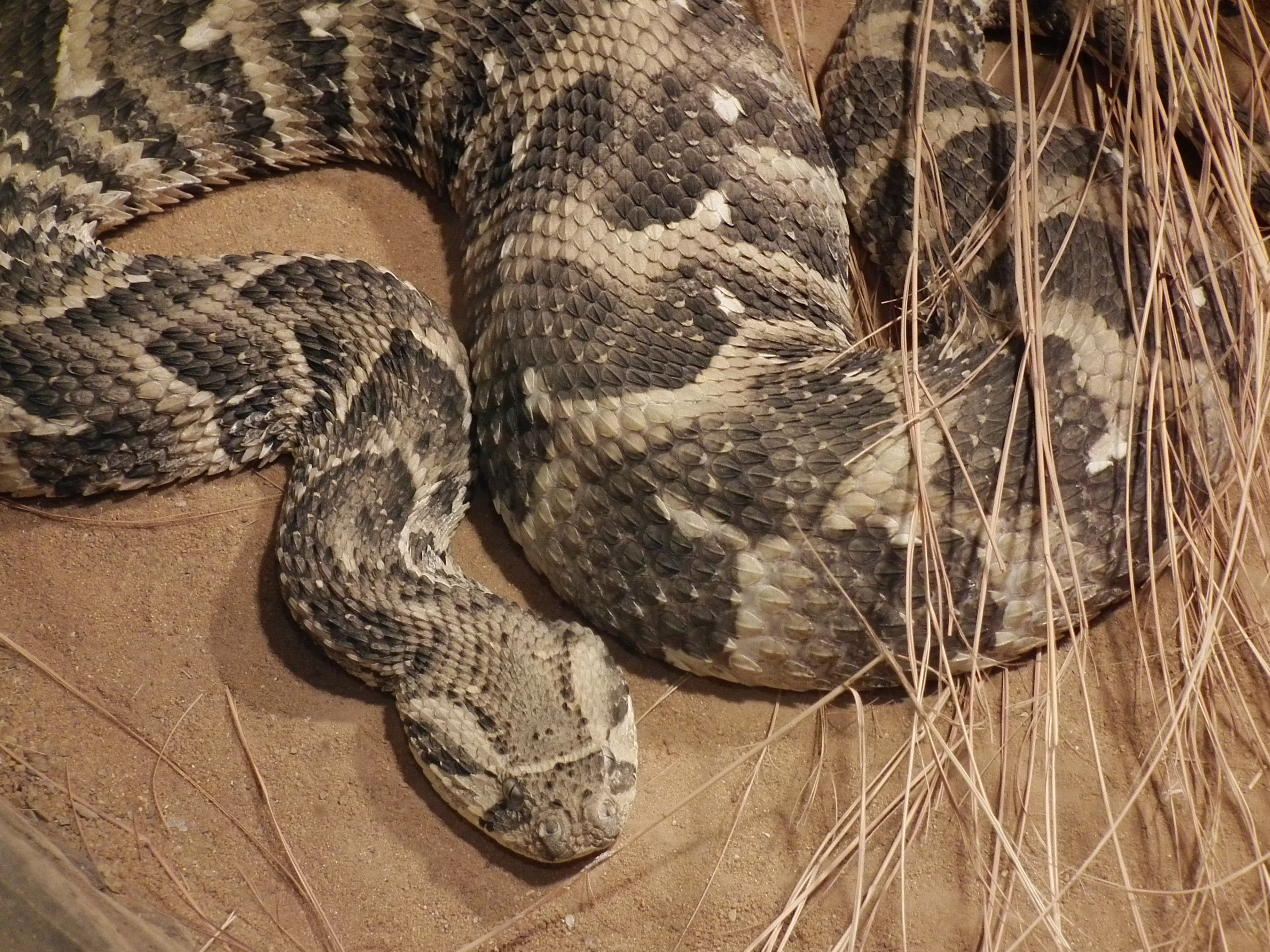One of my colleagues caught a puff adder outside the herbarium at work yesterday. What’s a puff adder you might ask? The answer is a deadly snake that looks like a stocky rattle snake. According to Wikipedia, puff adders are responsible for causing the most snakebite fatalities in Africa owing to their wide distribution, frequent occurrence in highly populated regions, and aggressive disposition.
Puff adders grow to 1 meter, though the one by the herbarium was a little shorter. They are mainly terrestrial, but also climb trees and swim. They like to bask in low bushes. Since they don’t want to waste their venom, they hiss loudly and continuously when disturbed, so you should know where they are. Their striking distance is about a third of their body length, although young puff adders will launch their whole bodies into the air. They can strike with extreme speed and such force that prey animals are often killed by the thump more than the venom. Their fangs can apparently puncture soft leather.
Puff adders eat mostly at night, lying in wait to ambush small vertebrate dinners like birds and lizards.
Assuming you are a healthy adult human male, you have at least 25 hours to live (and get treatment) if you are bitten by a puff adder. The time for smaller persons is something less than 25 hours. Effects also depend on the nature of the bite and how much venom was actually injected by the snake. At the bite, a person with get bleeding, swelling, pain and tenderness, bruising, and possibly gangrene and necrosis if left untreated. The victim may also become weak and dizzy and lose consciousness for brief periods.
Having given all the gory details, it appears that most people survive a puff adder bite. Only about 10% of untreated cases lead to death. Assuming good clinical management, you should survive and recover completely. This is very reassuring as I will almost certainly see them in the bush.
I also note that the guy who caught the puff adder simply moved it away from the buildings and released it again. When I asked him if he killed it, he looked a little shocked. That made me happy. I don’t want to be bitten by a puff adder, but it makes my heart happy when people respect and protect wildlife, even the kind that pose a bit of danger.
The fact is that venomous snakes, like other predators, are critical for ecosystems because they keep herbivores in check. They help people too. For instance, snakes prey on rodents, thus reducing rodent-related crop damage and the spread of disease. Snakes also provide food for large birds like eagles and other raptors and so contribute to the food web.
I had an experience in Tennessee of being very close to a rattle snake without knowing it (until later when someone pointed it out). This snake did nothing. It just sat there on the rock, although it could have “attacked” me if it wanted to. The point is that it didn’t. It had nothing to gain. And I wasn’t threatening it, so we both parted safe and with a good story to tell our friends.
